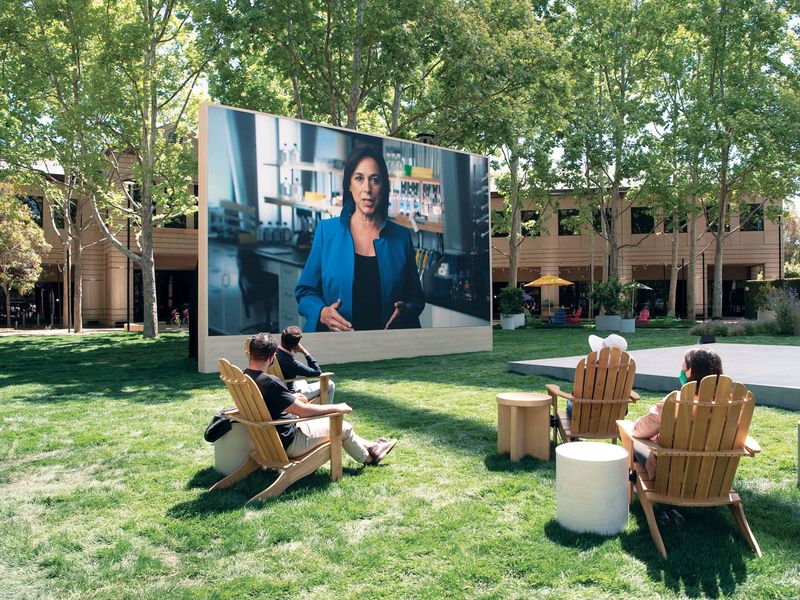Dr. Karen DeSalvo 
Dr. Karen DeSalvo is chief health officer at Google. She served as National Coordinator for Health Information Technology from 2014 to 2016 and U.S. Assistant Secretary for Health from 2014 to 2017.
During the pandemic, Google conferencing allowed her to remain connected to her colleagues.
The past decade marked impressive advancements during the digital era of American medicine. Hospitals across the country digitized their medical records, innovators developed tools for care coordination like telehealth and remote patient monitoring, and patients and consumers increasingly turned to the internet and mobile devices to better engage with their physicians and take ownership of their health.
However, while the advent of new technologies has changed how we work in medicine, the developers of these products have not always changed how they work with medicine. Too often, technology has leveraged clinicians as advisers rather than co-creators, and as such, many new products have fallen short of their potential to drive system transformation in healthcare.
Putting healthcare front and center requires giving clinicians a seat at the table.
Consequently, as part of Google’s company-wide commitment to health, we’ve sought to advance a new operating model where we move our clinical talent from “on call” for one-off advising to “on board” for active engagement in product development and strategic visioning. This process has resulted in the development of Google’s Clinical Team, which is rapidly scaling to support priorities across the company.
COVID-19 accelerated the impetus for this new way of working. The complex and rapidly evolving environment of the pandemic demanded interdisciplinary solutions and strategic partnerships. We sought to leverage our clinical expertise to support public health agencies in the response to COVID-19. For example, drawing on our team’s’ expertise in diverse medical specialties, public health, and population health analytics, we developed Search Symptom Trends, an aggregated and anonymized dataset for over 400 signs and health conditions that can support an “infodemiology” approach to public health during the pandemic, and beyond. Likewise, to combat hesitancy for COVID-19 vaccines, we elevated authoritative information from public health authorities and partnered with academic leaders like the Satcher Health Leadership Institute and Ariadne Labs to identify and mitigate disparities in access.
These collaborations exemplify the kinds of strategic partnerships that are foundational to modernizing public health infrastructure under Public Health 3.0, a framework the National Academy of Medicine recently affirmed as part of its expert series on post-pandemic policy reforms. Companies worldwide are now looking to institutionalize these ways of working beyond COVID-19 by investing in chief medical officers and exploring the development of permanent, in-house clinical teams.
These trends point to the future of medicine: one where health is recognized as a business imperative by all companies, even those outside of the healthcare industry. Yet we must be cautious of equating title innovation with value creation. For the momentum from COVID-19 to last, we have to think creatively about how medicine, technology and other sectors can work together to advance the public’s health.
At Google, integrating our health and clinical talent into product development teams has required defining a set of shared values and fostering a spectrum of engagement activities to ensure clinical perspectives are incorporated throughout the life cycle. It is imperative to recognize that standing up a clinical team in a historically nonclinical environment is different from overseeing a multidisciplinary team in the hospital, where personnel might have different training backgrounds but still speak the common language of medicine.
Maximizing the potential of clinical teams ultimately means committing to health as an organization-wide imperative, providing dedicated resources for hiring and supporting career growth for health professional experts with diverse personal and career experiences, and involving them in both day-to-day decision-making and long-term strategic visioning.
In Public Health 3.0, health leaders reminded us that public health is what we do together to create the conditions for everyone to be healthy. As we look beyond COVID-19, we need to ensure the business world’s newfound commitment to public health is reflected in the personnel it recruits and the pipeline it fosters. For the technology world, that means bringing clinicians in from the exam room to the boardroom, using the power of partnership to create a healthier future for all.
Source link : https://www.modernhealthcare.com/opinion-editorial/power-partnership-imagining-new-future-public-health











